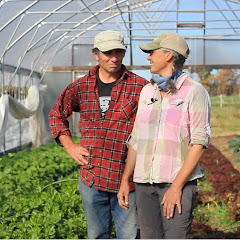People often ask what we do in the winter. It seems that generally we can say that we work. The farm has been a work in progress since the day we arrived in November 2002, and it continues year round. As a city boy I had no idea the amount of care and upkeep a farmstead requires. What I thought might take 3 years is now going on 7.
While we take a respite from thinking about farming during the month of December, come the New Year we are focused on the future. This year that includes the normal things like reviewing the seed catalogs and ordering seeds, ordering equipment, soil amendments and other supplies, and getting ready for starting up the greenhouse in early February, processing membership deposits, meeting with the Core Group to discuss future plans, and getting ready for the sign-up meeting. It also includes the development of a 3 year plan (more on that from Rebecca in a day or two), and planning this year’s projects: bees, livestock (a few sheep), permanent irrigation piping, barn improvements, implement maintenance, a new blueberry patch, 20 more fruit trees, and two interns. We also co-taught a CSA Mini-School at the Great Plains Vegetable Growers Conference, and have been helping to establish the Kansas City CSA Coalition (www.kc-csac.org).

Our biggest project this winter however, has been our home remodel. We have been slowly converting our 1930’s farmhouse (originally built w/o running water or electricity), into a more open floor plan and modern home. We are excited this year that we will finish (at least 90%) our kitchen and dining room. We began painting on Sunday and are in the homestretch (not a moment too soon.)
While we were remodeling the kitchen, we were able to convert our utility room into a kitchen, with the stove and refrigerator stationed in the office. It gave us use of all the essentials, and cleared the kitchen so we could work unobstructed. We were even able to can, making orange marmalade with organic oranges mail ordered from Mission, Texas. About as local citrus as you can get around here.

Recipe: Orange Marmalade
6 to 7 quarts whole oranges
1-1/2 quarts sugar
- With a vegetable peeler, peel the rind off the oranges, trying to leave the white pith behind (see first picture)
- Put rind in a pot covered with water, bring to boil, turn down heat and simmer for 10 minutes (this removes the bitterness)
- Drain and coarsely chop the rind
- Meanwhile, devein, deseed and peel the oranges. With the oranges we had the steps were to cut the orange (from pole to pole) into quarters, set the wedges on their side and trim the core part, pick out the seeds, and then peel them (see second picture). You can coarsley chop them or leave them whole at this point, depending on the consistency you like.
- Put the sugar, rind and oranges into a stainless steel or enameled pot and bring to a boil, stirring frequently at the start
- Lower heat to medium and cook until mixture thickens, about 1-1/2 to 2 hours
- Pour into hot jars and process in hot water bath for 10 minutes to seal.


















